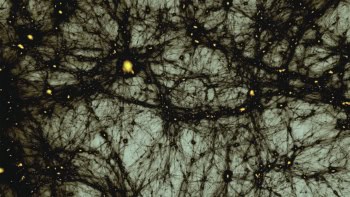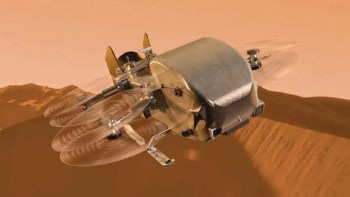Astrophysicists have seen evidence for tiny variations in the background of neutrinos left over from the Big Bang. Roberto Trotta of Oxford University and Alessandro Melchiorri at the University of Rome "La Sapienza" say that their results are consistent with the standard models of both cosmology and particle physics. Their paper, which was posted on Arxiv.org in December, has just been accepted for publication in Physical Review Letters (astro-ph/0412066).
Just as the cosmic microwave background is made up of photons from the early universe, the cosmic neutrino background consists of neutrinos left over from the Big Bang. In a series of experiments over the past decade astrophysicists have measured the anisotropy of the microwave background – tiny fluctuations in its temperature at different positions in the sky – with increasing precision. These measurements have provided the most accurate data to date of the age and composition of the universe.
However, neutrinos are much more difficult to detect than photons, which is why much less is known about the cosmic neutrino background. Indeed, Trotta and Melchiorri rely on measurements of the microwave background and other astrophysical observations to find evidence for ripples in the neutrino background.
Theorists have predicted that the neutrino background should contain about 150 neutrinos per cubic centimetre and that they should have a temperature of around 2 Kelvin. Moreover, like the microwave background, the neutrino background should also be anisotropic. In both cases these anisotropies reflect the slight variations in the distribution of matter in the early universe that eventually grow to produce the large-scale structure of galaxies and galaxy clusters that we see today.
Trotta and Melchiorri take advantage of the fact that neutrino ripples have an indirect impact on the microwave background because they perturb the gravitational potential in the early universe, which in turn changes the energy or temperature of the microwave photons as they travel across the universe.
The neutrino anisotropy can be described by a viscosity parameter that relates the velocity of the neutrinos and to an anisotropic stress in the background. By carefully examining data from the Wilkinson Microwave Anisotropy Probe and the Sloan Digital Sky Survey, Trotta and Melchiorri have seen evidence for a non-zero viscosity parameter. If the viscosity parameter is zero the neutrino background does not contain any ripples.
“We were astonished by the fact that it was possible to achieve this result using present-day data, and so were the experts we spoke to,” says Trotta, who is also based at the University of Geneva. “It is proof of the extremely high quality of modern cosmological measurements, which allow us to investigate such subtle effects.”
Trotta and Melchiorri now plan to explore the anisotropy of the neutrino background in greater detail.



